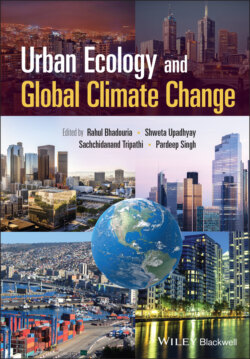Читать книгу Urban Ecology and Global Climate Change - Группа авторов - Страница 28
1.5.2 Plant Adaptations
ОглавлениеNot all the species are sensitive to the higher temperature and drought conditions, as some of the species may escape these extreme conditions by developing resilience and adaptations. In a study on species distribution under varying ranges of the European regions, Lososová et al. (2018) reported that about 45% of species do not show any direct relationship with the geographical distribution and climatic conditions. Thus, with the ongoing climate change, several species have been expected to decline, whereas some other species (particularly alien) which showed resilience to the climate change may spread, particularly in the European urban ecosystems. In other words, the space/niches created due to the decline of a species would be filled up by those species which have the tendency to cope‐up with the increased temperature and drought conditions (Lososová et al. 2018). The fast‐growing annuals (herbs) respond more quickly to the environmental changes as compared to the perennial herbs and woody vegetation (Grime 2001), thus these species may have wider distribution ranges in the future. The ruderal life strategy, production of large number of seeds/propagules and self‐pollination traits help the annual herbs to track the environmental changes more quickly (Aarssen 1998; Lososová et al. 2018). Therefore, they are considered as the key indicators of the ongoing climate change. Further, the dominance of plants using the C4 photosynthetic pathway has also been reported from the urban regions as compared to the non‐urban regions of the European countries (Duffy and Chown 2016). It is expected that the C4 plant species have more adaptive capacity to the localised warming conditions created by the UHI effects in the European regions which can be a strategy for the shift in future vegetation cover in these regions with the climate change (Duffy and Chown 2016). Such type of studies related to the species composition and climate change adaptation are needed from the tropical regions of the world as well.
